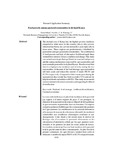| dc.contributor.author | Nyariki, Dickson M. | |
| dc.contributor.author | Yazan, E. | |
| dc.contributor.author | Wasonga, V. | |
| dc.date.accessioned | 2017-02-25T07:30:48Z | |
| dc.date.available | 2017-02-25T07:30:48Z | |
| dc.date.issued | 2012 | |
| dc.identifier.uri | http://hdl.handle.net/123456789/207 | |
| dc.identifier.uri | http://agris.fao.org/agris-search/search.do?recordID=RF2013031637 | |
| dc.identifier.uri | https://www.ruforum.org/documents/food-poverty-among-pastoral-communities-dryland-kenya | |
| dc.identifier.uri | http://erepository.uonbi.ac.ke/handle/11295/65248 | |
| dc.identifier.uri | http://www.kainet.ne.ke/documents/food-poverty-among-pastoral-communities-dryland-kenya | |
| dc.description.abstract | The dryland area of Kenya has the highest poverty incidence compared to other areas in the country; this is why poverty reduction has been a key government policy goal especially in these areas. These regions are predominantly inhabited by pastoralists and agro-pastoralist communities. The combination of food poverty and lack of alternative livelihood made them vulnerable to extreme climatic condition and change. This study was carried out in larger Baringo District to examine food poverty and the coping mechanisms employed by agro-pastoralists and semi-nomadic pastoralist in dryland Kenya. Results reveal that there is a high poverty incidence and severity among the two communities. At the peak of the food shortage, agro-pastoralists sell their assets and reduce the number of meals (90.8% and 82.3%) respectively. Compared to their counterparts during the same period, they mostly buy food on credit (71%) and ask for help from friends and relatives (60.9%). This study recommends more investment in livestock economics and supporting livelihood diversification. | en_US |
| dc.language.iso | en | en_US |
| dc.subject | Dry Land | en_US |
| dc.title | Food poverty among pastoral communities in dryland Kenya | en_US |
| dc.type | Article | en_US |

